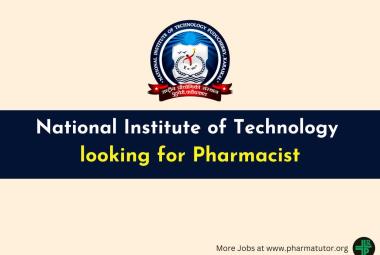Over the past two decades, Global Capability Centres (GCCs) in India have quietly transformed from back-office support units into central hubs of innovation and scientific expertise for some of the world’s biggest pharmaceutical and life sciences companies. Today, they are not only reducing costs for their parent organizations but also playing a decisive role in how new medicines are discovered, developed, tested, and delivered to patients worldwide.
Anil Matai, Director General of OPPI, captured this moment perfectly
“India’s pharmaceutical sector is undergoing a profound transformation, one that is reshaping its role in the global healthcare ecosystem. While the country has long been recognized for its strength in manufacturing and as the ‘pharmacy of the world’, a new chapter is unfolding, one defined by innovation, digitalization, and deep integration into global value chains. Today, India is not just hosting GCCs, it is driving them. These centers are expanding in both scale and scope, with multinational pharmaceutical companies choosing India as the hub for high-value activities ranging from data science and AI-driven drug discovery to regulatory strategy, digital health, and clinical development.”
A Sector at the Brink of Transformation
The life sciences sector itself is set for major growth. The industry currently stands at around USD 1.9 trillion globally, and it has been growing at nearly 7% CAGR for the last five years despite pressures from the “Loss of Exclusivity” (LoE), when patents on blockbuster drugs expire. In the past, life sciences companies have proven remarkably resilient. They have re-established their operating models to be more agile, strengthened their supply chains, and ensured stricter product compliance in response to changing economic and business pressures.
The COVID-19 pandemic marked a turning point in how companies and governments viewed GCCs. No longer seen as just cost-saving units, these centres showed their ability to keep operations running during crises, contribute to faster drug development, and advance patient-centric innovation. Since then, leaders in the pharma sector increasingly recognize GCCs as critical engines that accelerate drug discovery, integrate with global strategy, and bring real impact to patients’ lives.
Facing the Patent Cliff
As EY reported, one of the biggest challenges for pharma is the approaching USD 236 billion “patent cliff” between 2025 and 2030. Nearly 70 high-revenue products will lose exclusivity, opening the door to competition from generics and biosimilars. To protect revenues and stay competitive, companies are shifting their R&D toward AI-driven efficiency, redesigning the entire journey from molecule to market.
Here, GCCs are stepping into the spotlight. With strong capabilities in data science, biostatistics, and advanced analytics, Indian centres are helping companies reimagine discovery, accelerate trials, and optimize regulatory submissions. By doing so, they are enabling faster launches and supporting higher volumes of product introductions at global scale. Many GCCs are also taking on commercial excellence functions, ensuring that once a drug is approved, it reaches markets at speed and with precision.
The Scale of India’s GCC Presence
The growth of GCCs in India is not a marginal trend—it is central to global pharma strategies. Of the top 50 life sciences organizations in the world, 23 already have GCCs in India, and more than half of them have entered only in the last five years. This sharp uptick underscores how executive leaders are using India to prepare for an uncertain decade of patent expiries, regulatory scrutiny, and fierce competition.
Today, there are over 1,700 GCCs in India across industries, employing close to two million professionals, with life sciences and pharma making up a large and fast-growing share.
How Global Pharma Uses India’s GCCs
AstraZeneca
AstraZeneca’s Global Innovation and Technology Centre (GITC) in Chennai is one of the company’s largest centres outside the UK. With around 4,000 employees, it supports clinical data management, patient safety, regulatory affairs, supply chain, and digital health projects. This GCC is not just about operations—it actively contributes to AstraZeneca’s pipeline by enabling real-world evidence studies and digital therapeutics.
Johnson & Johnson
Johnson& Johnson’s Capability Centre in India has become central to its global strategy. It handles regulatory submissions, pharmacovigilance, clinical trial management, and commercial operations. The centre also pilots advanced AI-driven projects to enhance patient safety monitoring and optimize clinical trial efficiency, reflecting J&J’s push to integrate India into its long-term innovation model.
Novartis
Novartis has developed one of the most comprehensive GCCs in Hyderabad, employing thousands of people across diverse functions. The centre integrates drug development, medical writing, data operations, and advanced analytics. Novartis India GCC is also a leader in digital innovation, with specialized units working on data science, AI, and next-generation digital health tools. It has become a role model for how a GCC can own end-to-end accountability in pharma.
Sanofi
Sanofi’s GCC in India supports global operations in R&D, manufacturing analytics, and regulatory submissions. It plays a key role in Sanofi’s strategy of improving access and accelerating launches. With significant investment in AI and data capabilities, Sanofi uses its Indian centre to build predictive models for supply chain resilience and patient-centric digital solutions.
From Cost Centres to Innovation Hubs
For many years, the phrase “Global Capability Centre” was almost synonymous with “back-office support.” In the early 2000s, most multinational pharma companies that set up operations in India did so for transactional tasks: payroll processing, IT helpdesks, call centre support, finance reconciliations, or HR paperwork. These functions were important for efficiency but were not seen as strategic. India was chosen primarily because it was affordable, English-speaking, and had a large pool of educated workers.
But the story has now completely changed. Over the past decade, and especially after the COVID-19 pandemic, India’s GCCs have moved up the value chain. Today, they are innovation hubs, deeply embedded into the life sciences value chain. Instead of just being “cost centres” that save money, they are now “value centres” that create measurable impact on drug pipelines, patient outcomes, and time-to-market.
How this Transformation Happened
Several forces triggered this shift :
Digital Disruption: Pharma companies realized that digital health, data science, AI, and automation could no longer be “add-ons”—they had to be core to the business. India’s GCCs became natural testbeds and later leaders in applying these technologies to clinical research, drug safety, and commercial analytics.
Globalization of R&D: Drug discovery and development is increasingly global. To compete, companies spread their R&D across geographies. India’s GCCs started taking on specialized functions like biostatistics, medical writing, pharmacovigilance, and regulatory dossiers.
Crisis as a Catalyst: The pandemic showed that distributed centres could keep operations running. When labs and offices shut down in Europe and the US, Indian GCCs kept trials on track, processed safety data, and even ran large-scale digital analytics projects to study vaccine rollout. This shifted leadership’s perception from “support function” to “strategic partner.”
What GCCs Do Today
Modern GCCs now manage integrated, high-value functions that span the entire life sciences value chain:
Drug Discovery Support: AI-driven molecule screening, bioinformatics, and real-world data integration.
Clinical Development: Trial operations, patient enrolment analytics, safety signal monitoring, and statistical programming.
Regulatory Affairs: Preparing, compiling, and submitting dossiers across multiple geographies. Many Indian GCCs now handle end-to-end submissions for FDA, EMA, and other agencies.
Pharmacovigilance: Safety case processing, adverse event detection, AI-based risk assessment, and global signal management.
Commercial & Market Excellence: Real-world evidence analytics, digital marketing, physician engagement platforms, and launch readiness models.
Enabling Services: Finance, HR, IT, legal, supply chain analytics, all integrated with scientific functions for efficiency.
Why India?
When global pharmaceutical leaders decide where to build their capability centres, the choice is not accidental. India has emerged as the destination of choice for life sciences GCCs because of a combination of talent, cost, ecosystem maturity, and policy support. But it goes deeper than that, it is about India offering not just one advantage, but an entire package that few other geographies can match.
A Deep and Diverse Talent Pool
India’s greatest strength lies in its people. Each year, the country produces:
2 million STEM graduates, including engineers and data scientists who can power digital innovation.
Over 100,000 medical professionals, including doctors, pharmacists, and life sciences researchers who bring scientific and clinical expertise.
A large pipeline of professionals trained in biostatistics, regulatory science, and pharmacovigilance, many of whom gain international exposure through partnerships with global firms and universities.
This unique mix of scientific expertise and digital skills allows GCCs in India to staff functions that range from AI-driven molecule discovery to clinical trial data management — something that is difficult to replicate elsewhere. For companies, this means they can find not just quantity of talent, but also quality that aligns with their global needs.
Cost Advantage with Global-Standard Quality
India continues to offer a cost advantage — salaries and operational costs are lower than in Europe or North America. But what has changed over the last decade is quality maturity.
Today, Indian GCCs are not just inexpensive; they are globally benchmarked. Many centres are ISO-certified, run under GxP-compliant frameworks, and audited to the same standards as headquarters. This allows multinationals to relocate even regulated functions like pharmacovigilance, regulatory submissions, or clinical data processing to India without fearing a drop in compliance.
This combination, affordability plus quality, makes India a “high-value, low-risk” hub.
Policy and Government Support
Both central and state governments in India have recognized the strategic importance of GCCs. As a result, they are providing incentives that encourage life sciences firms to expand here. These include:
• Capital expenditure subsidies for setting up labs and infrastructure.
• Tax breaks and rental rebates for global firms that establish large centres.
• Single-window clearances that simplify regulatory hurdles for investment.
Dedicated biotech and pharma clusters (such as Genome Valley in Hyderabad, Bengaluru BioInnovation Centre, and GIFT City for financial/tech services).
This policy push reduces friction and makes India not only cost-effective but also easy to do business in, particularly for knowledge-intensive industries like pharma.
A Thriving Ecosystem Around GCCs
Another reason India stands out is the maturity of its ecosystem:
Academic institutions: Prestigious medical and engineering universities produce skilled graduates and engage in collaborative research.
Startups: India’s booming health-tech and biotech startup scene provides GCCs with innovation partners. Many multinationals now co-innovate with Indian startups to pilot AI, digital health apps, or real-world evidence platforms.
Contract Research Organizations (CROs): India is home to several CROs that support clinical trials, pre-clinical studies, and regulatory compliance. This makes it easier for GCCs to plug into a ready ecosystem.
Global service providers: Consulting firms, IT giants, and domain specialists add an extra layer of expertise, allowing GCCs to scale quickly without building everything in-house.
This interconnected ecosystem means Indian GCCs don’t work in isolation, they are surrounded by knowledge networks that amplify their value.
Strategic Location and Time Zone
India’s geographical location offers another subtle but important advantage. Sitting between Western and Eastern time zones, Indian teams can “extend the day” for global operations. Clinical data from US trials can be processed overnight in India, ready for HQ review the next morning. Regulatory dossiers for European markets can be compiled during India’s working hours, keeping timelines moving 24/7.
Challenges on the Horizon
Despite their rapid rise and expanding influence, India’s Global Capability Centres face a number of serious challenges that could shape their future trajectory. The most immediate of these lies in talent retention. India produces a vast pool of engineers, scientists, and healthcare professionals each year, but the most skilled employees, those with expertise in pharmacovigilance, biostatistics, regulatory affairs, or data science are highly mobile. Competition is not limited to pharmaceutical multinationals; technology companies, consulting firms, and health-tech startups are equally eager to attract the same talent. This has created a constant churn in the workforce, driving attrition rates higher than global averages. Moreover, the expectations of the new generation of professionals are different from a decade ago. Younger employees do not only seek stable employment; they want career growth, leadership opportunities, flexible work models, and the chance to work on meaningful projects that contribute to global healthcare. If GCCs cannot provide this balance of stability and aspiration, they risk losing the very talent that gives them their edge.
Another challenge lies in balancing innovation with compliance. As these centres move beyond support functions into sensitive and highly regulated areas, the stakes are rising. Pharmacovigilance, clinical trial data management, and regulatory dossier preparation demand absolute accuracy and strict adherence to global guidelines. A single oversight in adverse event reporting or a compliance lapse in documentation can put patient safety at risk and damage the credibility of the company. This challenge becomes even sharper as GCCs experiment with artificial intelligence and digital health solutions. Regulators around the world are watching closely how AI is being applied in drug discovery, safety monitoring, and clinical operations, and they will demand transparency, accountability, and ethical safeguards. GCCs in India must therefore walk a fine line: they need to embrace cutting-edge technologies boldly to stay competitive, while also maintaining impeccable compliance frameworks that meet the highest international standards.
There is also the issue of innovation maturity. Many centres in India are running pilots in AI, machine learning, or digital therapeutics, but only a small fraction have succeeded in embedding these innovations into their daily operations. Too often, projects remain at the experimental stage, celebrated internally but disconnected from the core global R&D or regulatory workflow. This creates a perception gap: while GCCs are innovative on paper, the actual measurable impact on timelines, costs, or outcomes is still limited. To close this gap, centres must move from experimentation to execution, ensuring that new tools are integrated at scale and deliver tangible results to the enterprise.
In addition, organizational and cultural alignment presents a subtler but equally important challenge. Although Indian teams are handling increasingly critical work, decision-making power often remains with headquarters in the US, Europe, or Japan. This can leave local professionals feeling like executors rather than innovators, undermining their sense of ownership. Aligning thousands of employees in India with the diverse regulatory and cultural environments of global markets is another hurdle. True integration requires not just technical capability but also a global mindset, cultural sensitivity, and strong leadership development. Without this, GCCs may struggle to achieve the credibility and influence they deserve within their parent organizations.
Finally, there are ecosystem and competitive pressures. While India’s ecosystem of universities, startups, and contract research organizations is strong, infrastructure gaps remain, especially outside the major hubs of Hyderabad, Bengaluru, and Chennai. Collaboration between GCCs and Indian startups, though promising, is still underutilized due to differences in scale, culture, and risk appetite. On top of this, India faces growing competition from other countries such as Poland, Singapore, and the Philippines, which are positioning themselves as attractive destinations for GCC investment. If India does not address its own bottlenecks, from infrastructure and regulatory consistency to talent retention and innovation maturity, companies may diversify their centres across multiple geographies.
In short, India’s GCCs are on a remarkable growth trajectory, but sustaining their momentum requires solving complex challenges. The future of these centres depends on whether they can retain and develop talent, build robust compliance systems, scale their innovations, integrate culturally with global teams, and continue to strengthen the ecosystem around them. If they succeed, they will reinforce India’s position as the strategic heart of global life sciences. If they falter, the same opportunities could slip to other competing nations.
Voices from Leaders
Global executives are also vocal about the importance of India’s GCCs. Pascal Soriot, CEO of AstraZeneca, has often highlighted how the company’s Indian teams are integral to its digital and clinical innovation strategy. Novartis leaders have described their Hyderabad centre as a “strategic engine” for innovation and efficiency. Johnson & Johnson executives emphasize how India has moved from being a cost base to becoming a global innovation hub. These voices underline that Indian GCCs are no longer in the background, they are front and centre in corporate strategy.
Amitabh Dube, Country President and Managing Director, Novartis in India says, “India is amongst a handful of countries in the world that have a broad Novartis footprint covering Pharma International (commercial organization), Novartis Corporate Center (Global Capability Center) that also houses Development (Drug Development) and Biomedical Research teams. We have consistently been recognised as a Top Employer.”
Ganpat Anchaliya, Site Head for NOCC Hyderabad expressed, “As pioneers, we setup the Global Capability Centre in Hyderabad nearly 20 years ago and I have been fortunate to be a part of this journey for the last 16 years. Today, this site has emerged as the largest Novartis Corporate Center and is fueling our purpose of reimagining medicine.”
The Road Ahead
The road ahead for India’s Global Capability Centres is both exciting and demanding. Having established themselves as credible engines of value, these centres must now focus on moving from being “supporters of global strategy” to becoming co-owners of outcomes. In the past, GCCs were often asked to execute instructions coming from headquarters. In the future, their role will be to shape, influence, and even lead strategic priorities. That means Indian teams will not just prepare regulatory submissions or process clinical trial data; they will take responsibility for ensuring faster product launches, better patient safety, and more effective market entry. This shift will require a mindset change, from task execution to outcome ownership, supported by strong governance structures and leadership empowerment.
At the heart of this transformation is the adoption of advanced technologies. Artificial intelligence, machine learning, and automation cannot remain limited to pilot projects or proof-of-concepts. They need to become part of the everyday workflow. For example, AI-driven molecule screening must be embedded in early-stage R&D pipelines; machine learning must power safety signal detection in pharmacovigilance; and digital twins and predictive analytics must drive supply chain decisions. Indian GCCs are uniquely placed to lead this technological leap because they combine scientific expertise with deep digital talent. But to realize this potential, companies must invest in building Centres of Excellence, cross-train employees in both science and technology, and create strong governance frameworks that ensure responsible and ethical use of AI.
Another critical part of the road ahead is talent strategy. Retaining skilled professionals is no longer only about salaries or titles. The next generation of scientists, clinicians, and data experts want careers that offer purpose, flexibility, and global exposure. GCCs will need to create leadership pathways, encourage cross-functional learning, and embed diversity and inclusion into their culture. Women, for example, remain underrepresented in leadership positions across life sciences, and this is an opportunity for Indian centres to set new benchmarks. Offering hybrid work models, clear growth trajectories, and meaningful work that contributes directly to patient outcomes will help build loyalty and reduce attrition. Ultimately, GCCs that are seen as “career accelerators” rather than “career stops” will win the talent war.
Equally important is collaboration with India’s broader ecosystem. No GCC can thrive in isolation. Partnerships with startups, universities, hospitals, and contract research organizations can accelerate innovation, reduce costs, and provide access to specialized expertise. Startups, for instance, are experimenting with AI-driven diagnostic tools, wearable health devices, and digital therapeutics, all of which can complement the work being done inside GCCs. Universities and medical schools provide a steady talent pipeline and research collaborations. CROs allow flexibility in clinical development. By building stronger bridges with these players, GCCs can amplify their own capabilities and become true innovation hubs rather than self-contained centres.
Finally, the future will demand uncompromising governance and compliance. As Indian GCCs take on more regulated and mission-critical functions, they must prove that speed and scale will never come at the cost of safety or quality. That means investing in robust compliance systems, training employees in global regulatory requirements, and creating strong oversight mechanisms. With regulators paying closer attention to how AI, digital health, and global outsourcing are being managed, Indian centres must stay ahead by ensuring transparency, accountability, and ethical standards. Governance will not just be a box to tick — it will be a source of trust that strengthens India’s reputation as a reliable hub.
In essence, the road ahead for India’s GCCs is about moving up the value curve. They will need to become outcome-driven partners, embrace technology at scale, build sustainable talent models, collaborate widely across the ecosystem, and uphold the highest standards of compliance. If they can achieve this balance, India’s GCCs will not just support the global life sciences industry — they will define its future. The coming decade will decide whether these centres remain cost-effective operations or rise as strategic engines of global healthcare innovation.
A Win for All
For companies, India’s GCCs now represent a strategic engine that can deliver innovation, efficiency, and global competitiveness. For India, they provide high-value employment and reinforce the country’s position as a global life sciences hub. And for patients worldwide, these centres mean faster access to new therapies, safer drugs, and more patient-focused innovations.
In short, India’s GCCs are no longer the hidden back offices of pharma, they are now at the very heart of the industry’s future.
- Rajesh Vagh
PharmaTutor Edu Labs









